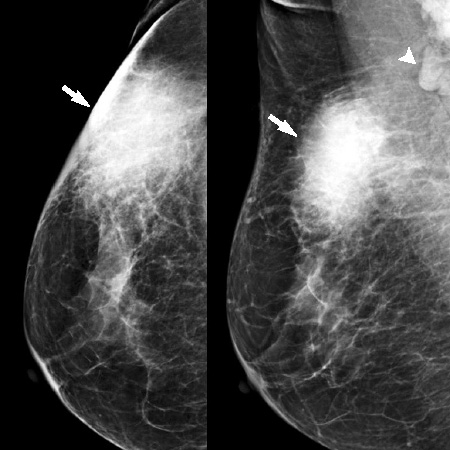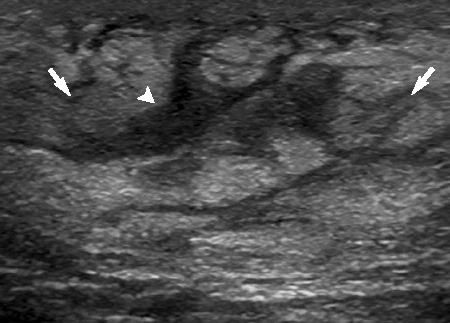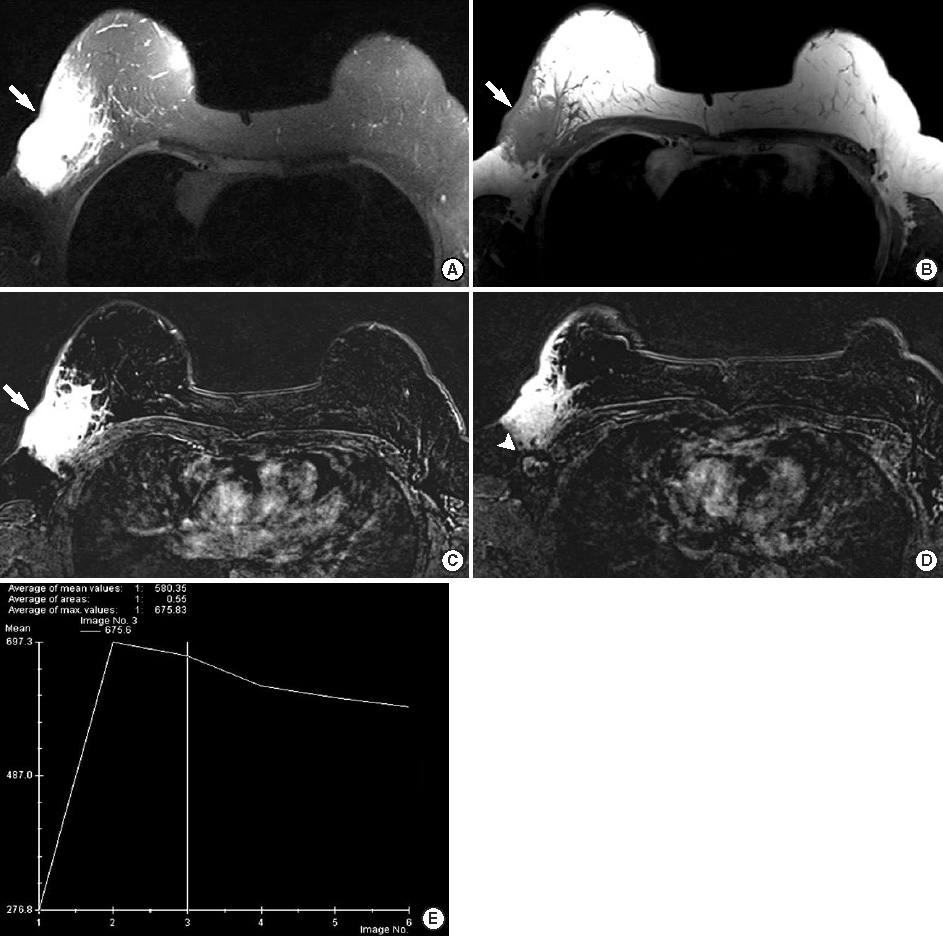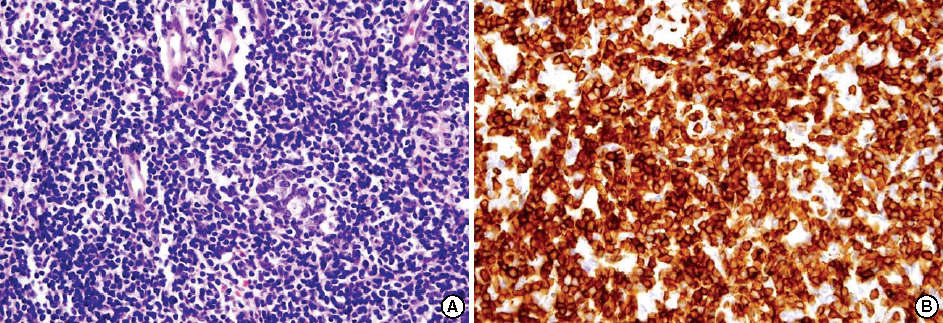J Breast Cancer.
2010 Sep;13(3):318-322.
Primary Peripheral T-cell Lymphoma of the Breast: Radiologic and Pathologic Findings
- Affiliations
-
- 1Department of Radiology, Korea University College of Medicine, Seoul, Korea. krcho@korea.ac.kr
- 2Department of Pathology, Korea University College of Medicine, Seoul, Korea.
- 3Department of Surgery, Korea University College of Medicine, Seoul, Korea.
Abstract
- Primary breast lymphoma is a rare disease entity, particularly the T-cell type. There have been many case reports of primary breast lymphomas; however, these are mostly pathologic reports, with only a few reports in radiology literature. To the best of our knowledge, this is the first report on the radiologic features of primary T-cell type breast lymphoma, including mammography, ultrasonography, MR imaging, and 18 fluorodeoxyglucose positron emission tomography/computed tomography scan. The radiologic findings are rather unique for this T-cell lymphoma compared to B cell type.
Keyword
MeSH Terms
Figure
Reference
-
1. Arber DA, Simpson JF, Weiss LM, Rappaport H. Non-Hodgkin's lymphoma involving the breast. Am J Surg Pathol. 1994. 18:288–295.
Article2. Uesato M, Miyazawa Y, Gunji Y, Ochiai T. Primary non-Hodgkin's lymphoma of the breast: report of a case with special reference to 380 cases in the Japanese literature. Breast Cancer. 2005. 12:154–158.
Article3. Petrek JA. Harris JR, editor. Lymphoma. Breast Diseases. 1991. 2nd ed. Philadelphia: Lippincott;806–807.4. Freeman C, Berg JW, Cutler SJ. Occurrence and prognosis of extranodal lymphomas. Cancer. 1972. 29:252–260.
Article5. Fukutomi T, Makuuchi M, Itabashi M, Tobinai K, Nanasawa T, Yamamoto H, et al. A rare case of asynchronous bilateral B-cell lymphoma of the breast. Jpn J Clin Oncol. 1989. 19:391–396.6. Jeon HJ, Akagi T, Hoshida Y, Hayashi K, Yoshino T, Tanaka T, et al. Primary non-Hodgkin malignant lymphoma of the breast. An immunohistochemical study of seven patients and literature review of 152 patients with breast lymphoma in Japan. Cancer. 1992. 70:2451–2459.
Article7. Wiseman C, Liao KT. Primary lymphoma of the breast. Cancer. 1972. 29:1705–1712.
Article8. Lyou CY, Yang SK, Choe DH, Lee BH, Kim KH. Mammographic and sonographic findings of primary breast lymphoma. Clin Imaging. 2007. 31:234–238.
Article9. Yang WT, Lane DL, Le-Petross HT, Abruzzo LV, Macapinlac HA. Breast lymphoma: imaging findings of 32 tumors in 27 patients. Radiology. 2007. 245:692–702.
Article10. Kako S, Izutsu K, Ota Y, Minatani Y, Sugaya M, Momose T, et al. FDG-PET in T-cell and NK-cell neoplasms. Ann Oncol. 2007. 18:1685–1690.
Article11. Otero HJ, Jagannathan JP, Prevedello LM, Johnston CJ, Ramaiya NH, Van den, et al. CT and PET/CT findings of T-cell lymphoma. AJR Am J Roentgenol. 2009. 193:349–358.
Article
- Full Text Links
- Actions
-
Cited
- CITED
-
- Close
- Share
- Similar articles
-
- Primary Mucosa-Associated Lymphoid Tissue Lymphoma of the Breast with Synchronous Contralateral Invasive Breast Cancer: A Case Report
- Breast Lymphoma: A Report of 2 Cases
- Clinical Feature of Primary Pulmonary Non-Hodgkin's Lymphoma
- Primary Pulmonary Lymphoma: A Report of 2 Cases
- A Case of Primary MALT Lymphoma of the Breast






